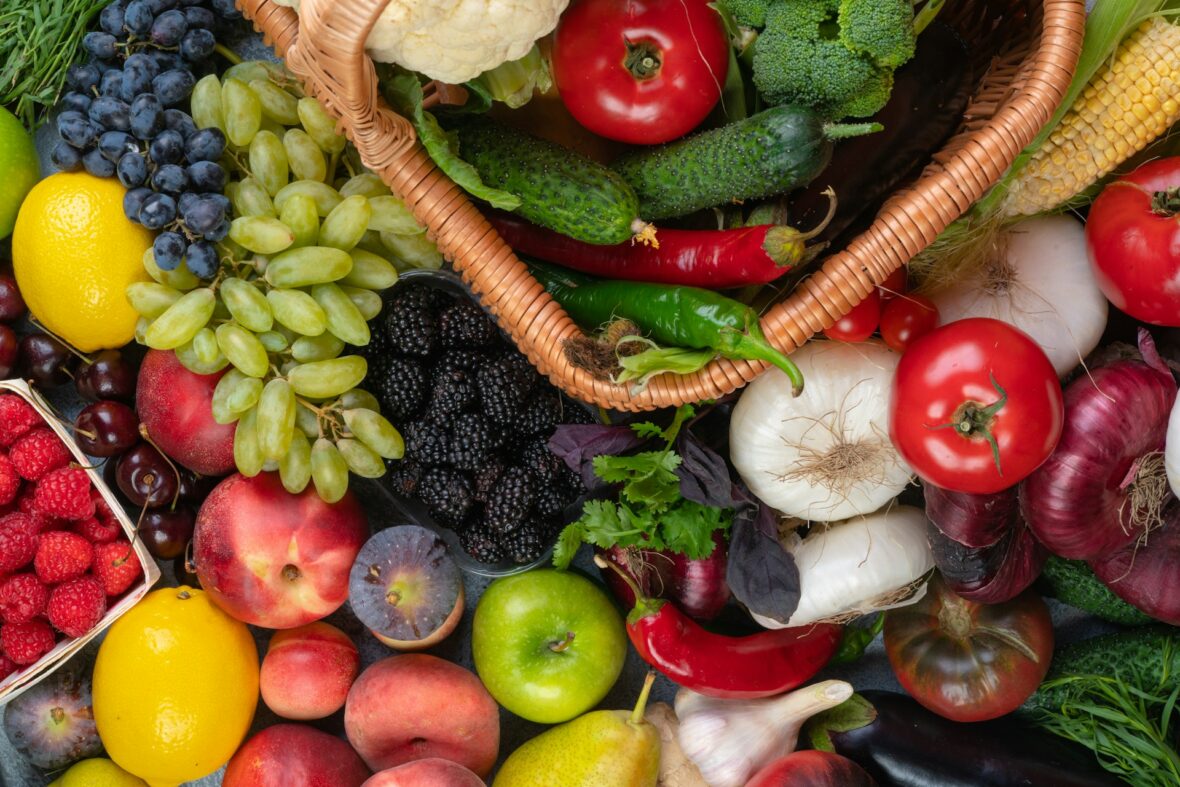When was the last time you bit into a perfectly ripe, in-season strawberry? The burst of sweetness, the vibrant red color, and that unmistakable aroma that fills your senses—this is seasonal eating at its finest. Beyond the superior taste, choosing seasonal produce offers profound benefits for your nutrition, your wallet, and the environment.
Seasonal eating means consuming fruits and vegetables when they naturally ripen in your local climate. This ancient practice, followed by our ancestors out of necessity, has evolved into a conscious choice for health-minded individuals seeking to optimize their nutrition while supporting sustainable food systems.
The concept extends far beyond simply shopping at farmers’ markets. It involves understanding the natural rhythms of food production, recognizing which nutrients your body craves during different times of the year, and aligning your diet with nature’s inherent wisdom.
Research shows that seasonal produce contains higher levels of essential vitamins and minerals compared to their out-of-season counterparts, making this approach a cornerstone of effective nutrition tips.
The Nutritional Advantages of Seasonal Produce
Peak Nutrient Density When Nature Intended
Seasonal produce reaches your plate at the height of its nutritional power. When fruits and vegetables ripen naturally in their intended season, they develop maximum concentrations of vitamins, minerals, and antioxidants.
A study published in the Journal of Agricultural and Food Chemistry found that spinach harvested in season contained 30% more vitamin C than greenhouse-grown alternatives. This nutrient density occurs because plants evolved to provide specific nutritional benefits when we need them most.
Citrus fruits ripen in winter, delivering immune-boosting vitamin C when cold and flu season peaks. Summer squash provides high water content and cooling properties during hot months, while root vegetables offer warming, grounding nutrients as temperatures drop.
Enhanced Bioavailability and Absorption
Your body recognizes and processes nutrients from seasonal foods more efficiently. The natural timing of seasonal eating aligns with your physiological needs, creating optimal conditions for nutrient absorption.
Spring greens like dandelion and nettle support liver detoxification after winter’s heavier foods, while autumn’s root vegetables provide sustained energy for the colder months ahead.
Reduced Chemical Exposure
In-season, locally grown produce typically requires fewer pesticides and preservatives. Plants growing in their natural season face fewer pest pressures and diseases, reducing the need for chemical interventions. This translates to cleaner food on your plate and fewer toxins in your system.
Building Sustainable Healthy Eating Habits
Creating Seasonal Meal Planning Systems
Developing healthy eating habits around seasonal rhythms requires strategic planning and flexibility. Start by researching what grows naturally in your region during each season. Create a monthly produce calendar that guides your shopping and meal planning decisions.
Successful seasonal eaters develop what nutritionists call “flexible food frameworks”—adaptable meal templates that change with the seasons while maintaining nutritional balance. A summer framework might emphasize raw salads, cold soups, and grilled vegetables, while winter versions focus on warming stews, roasted roots, and hearty grains.
Preservation Techniques for Year-Round Benefits
Modern seasonal eating doesn’t mean going without variety during off-seasons. Learning basic preservation methods—freezing, dehydrating, and fermentation—allows you to capture peak-season nutrition and extend it throughout the year. Freezing berries at their summer peak preserves most of their antioxidant content for winter smoothies.
Fermentation adds another dimension to seasonal eating by creating probiotic-rich foods that support digestive health. Sauerkraut made from autumn cabbages provides beneficial bacteria and vitamin C throughout thewinter months when fresh options are limited.
Seasonal Nutrition Strategies Throughout the Year
Spring Detoxification and Renewal
Spring’s arrival signals your body’s natural desire to cleanse and renew after winter. Early spring greens like arugula, watercress, and wild garlic support liver function and provide gentle detoxification. These bitter greens stimulate digestive enzymes and help process stored fats accumulated during colder months.
Asparagus, one of spring’s first vegetables, provides folate and glutathione—powerful compounds that support cellular repair and immune function. The natural diuretic properties of spring vegetables help eliminate winter’s accumulated toxins, while lighter foods prepare your digestive system for the year ahead.
Summer Hydration and Cooling
Summer’s abundance offers hydrating fruits and vegetables that help regulate body temperature and replace electrolytes lost through perspiration. Cucumbers, tomatoes, and melons provide high water content along with cooling properties recognized in traditional medicine systems worldwide.
The bright colors of summer produce—deep red tomatoes, orange peaches, purple berries—indicate high levels of antioxidants that protect against sun damage and support skin health. These phytonutrients work from the inside out, providing natural protection against environmental stressors.
Autumn Grounding and Preparation
Autumn’s harvest provides grounding, warming foods that help your body prepare for winter’s challenges. Root vegetables like sweet potatoes, carrots, and beets offer complex carbohydrates and beta-carotene, supporting sustained energy and immune function as daylight hours decrease.
Apple season brings pectin, a fiber that supports digestive health and helps regulate blood sugar. The natural sweetness of autumn fruits satisfies seasonal cravings while providing nutrients needed for the transition to colder weather.
Winter Warming and Sustenance
Winter vegetables like kale, Brussels sprouts, and winter squash improve in flavor after exposure to frost, concentrating their nutrients and natural sugars. These hardy vegetables provide the sustained energy and warming properties your body craves during cold months.
Citrus fruits reach peak ripeness during winter, providing essential vitamin C when fresh local options are scarce. The timing couldn’t be more perfect for supporting immune function during cold and flu season.
Practical Implementation Strategies
Shopping and Sourcing Seasonal Foods
Transform your grocery shopping by starting with seasonal produce sections before exploring other areas of the store. Many supermarkets now label locally grown, seasonal items, making identification easier for beginners.
Farmers’ markets remain the gold standard for seasonal shopping, offering direct access to local growers who can provide information about growing methods, harvest timing, and optimal storage. Building relationships with local farmers often leads to advance notice about specialty items and bulk purchasing opportunities.
Community Supported Agriculture (CSA) programs remove the guesswork from seasonal eating by delivering weekly boxes of whatever is currently in season. This approach introduces variety you might not otherwise try while ensuring peak freshness and quality.
Kitchen Adaptation and Recipe Development
Seasonal eating requires kitchen flexibility and creative recipe adaptation. Instead of following rigid recipes, learn cooking techniques that work with whatever is in season. Mastering basic methods—roasting, sautéing, steaming—allows you to prepare any seasonal vegetable deliciously.
Develop a collection of adaptable base recipes that change with the seasons. A basic grain bowl template might feature quinoa with roasted vegetables, changing from asparagus and peas in spring to butternut squash and Brussels sprouts in winter.
Overcoming Common Seasonal Eating Challenges
Budget Considerations and Cost Management
Contrary to popular belief, seasonal eating often reduces food costs. In-season produce requires less transportation and storage, reducing retail prices. Buying in bulk during peak season for preservation stretches your budget further while ensuring quality nutrition year-round.
Planning meals around seasonal sales and abundance prevents impulse purchases of expensive out-of-season items. When strawberries are $1 per pound in June, stock up for freezing rather than paying $4 per pound in December.
Geographic and Climate Limitations
Urban dwellers and those in challenging climates can still practice seasonal eating through creative sourcing and preservation. Indoor growing systems extend local seasons, while regional specialties from similar climates provide seasonal variety.
Understanding your specific growing zone helps identify which foods are truly local and seasonal versus those shipped from distant regions. Even small steps toward seasonal awareness create meaningful improvements in nutrition and sustainability.
Making Seasonal Eating Your New Normal
Embracing seasonal produce and developing sustainable, healthy eating habits doesn’t require perfection—it requires consistency and gradual change. Start by incorporating one seasonal item into your weekly shopping routine, then gradually expand as you become more comfortable identifying and preparing seasonal foods.
The path to optimal nutrition lies not in complex supplementation or restrictive dieting, but in working with nature’s inherent wisdom. Seasonal eating provides a framework for making nutrition tips practical and sustainable while connecting you more deeply with your food and environment.
Begin this week by visiting a local farmers’ market or identifying three seasonal items currently available in your area. Notice the difference in taste, texture, and satisfaction compared to their out-of-season counterparts. Your body—and your taste buds—will thank you for returning to this time-tested approach to nourishment.






